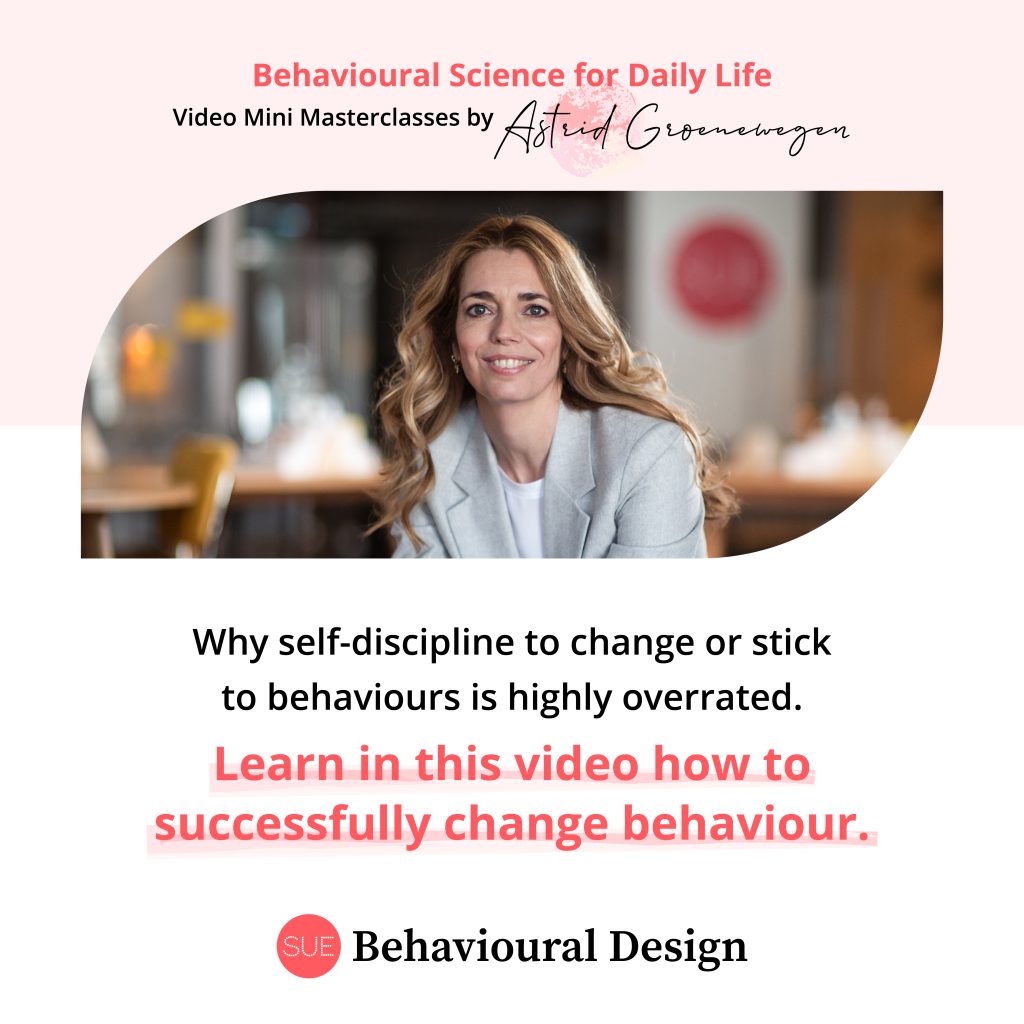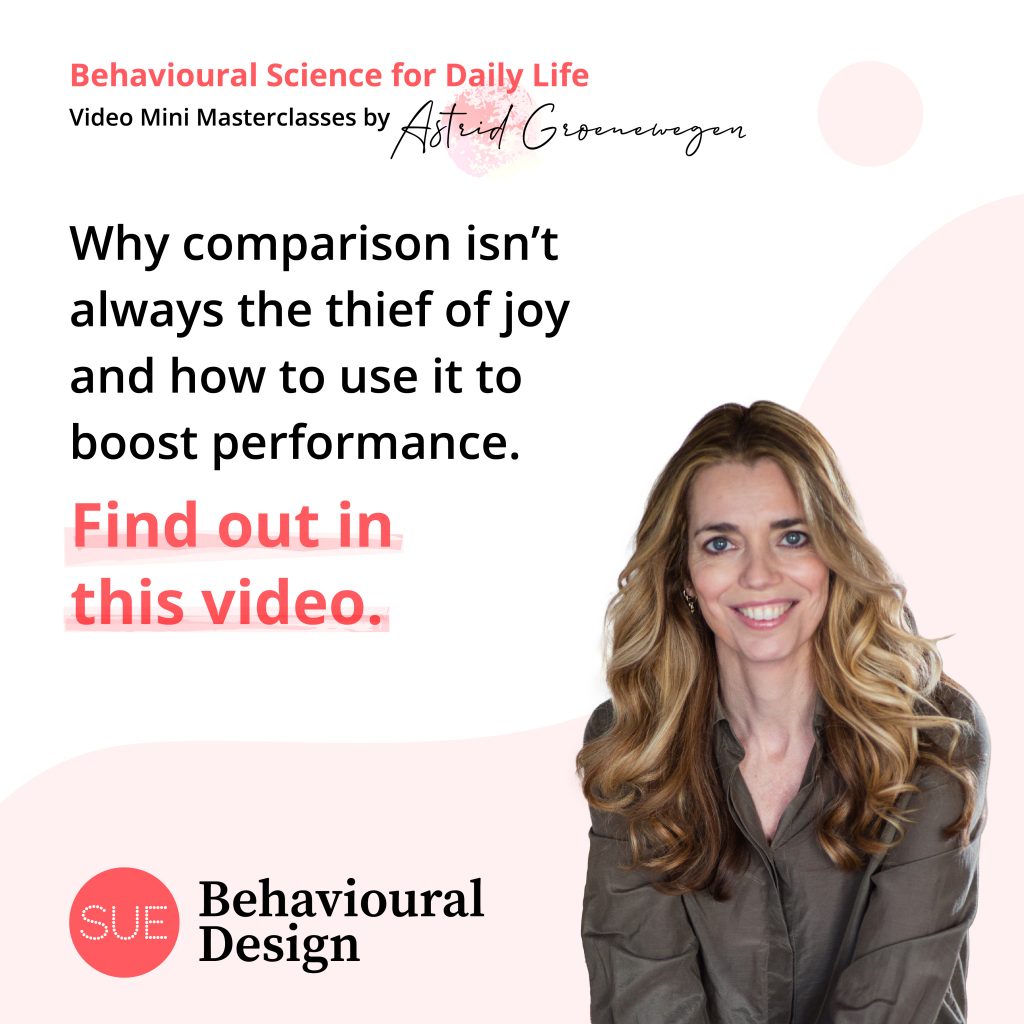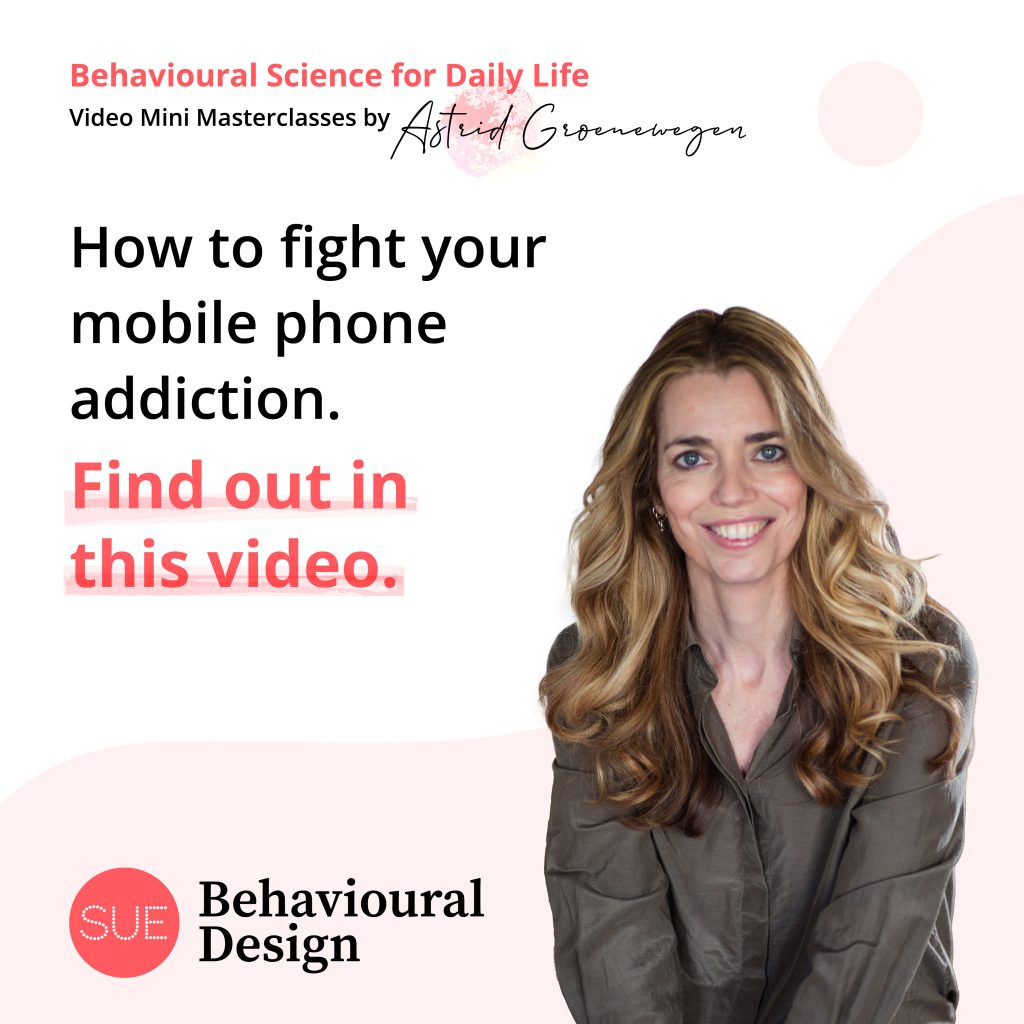
Can’t control yourself sometimes? It’s not up to you! Self-discipline is hugely overrated. In this video, Astrid Groenewegen explains what we can pay attention to besides self-discipline.
Make the desirable behaviour easy
Have you ever had good resolutions? Exercise more, eat healthy, or work harder. Yet you quickly fall back into your old behaviour. Why does this happen anyway?
Relying on self-discipline to achieve the desired behaviour is overrated. In fact, only top athletes usually succeed. This is because self-discipline requires cognitive action. But the part of the brain you need for this has only a limited capacity.
If you start with the best intentions at the beginning of your day, you will still fail at the end of the day because your cognitive capacities will be depleted by then. As a result, you start snacking or slacking off. So this is not a weakness but human nature. Your automatic brain takes over, and you fall back into your old behaviour.
Behaviour that is familiar and doesn’t require too much attention.
But you can change your behaviour. The solution is to make the behaviour very easy to perform. This will allow your automatic brain to execute the new behaviour. For example, slice some cucumber in the afternoon and put it in a bowl on your desk. It is then much easier to eat than a bag of chips still in the cupboard.
Our tip: To stick with new behaviour, focus on making the behaviour easy to perform rather than relying on self-discipline.


Watch more on YouTube
Check out the whole series on YouTube. If you like the videos, it would mean a great deal to me if you could give them a thumbs up or subscribe to my channel.
Or check out the most popular videos here
Or book a training
Learn how to influence minds and shape behaviour.
Join our most popular training the Behavioural Design Fundamentals Course. You will learn the latest insights from behavioural science and you'll master an easy-to-use method to help apply behavioural science in practice right away!








